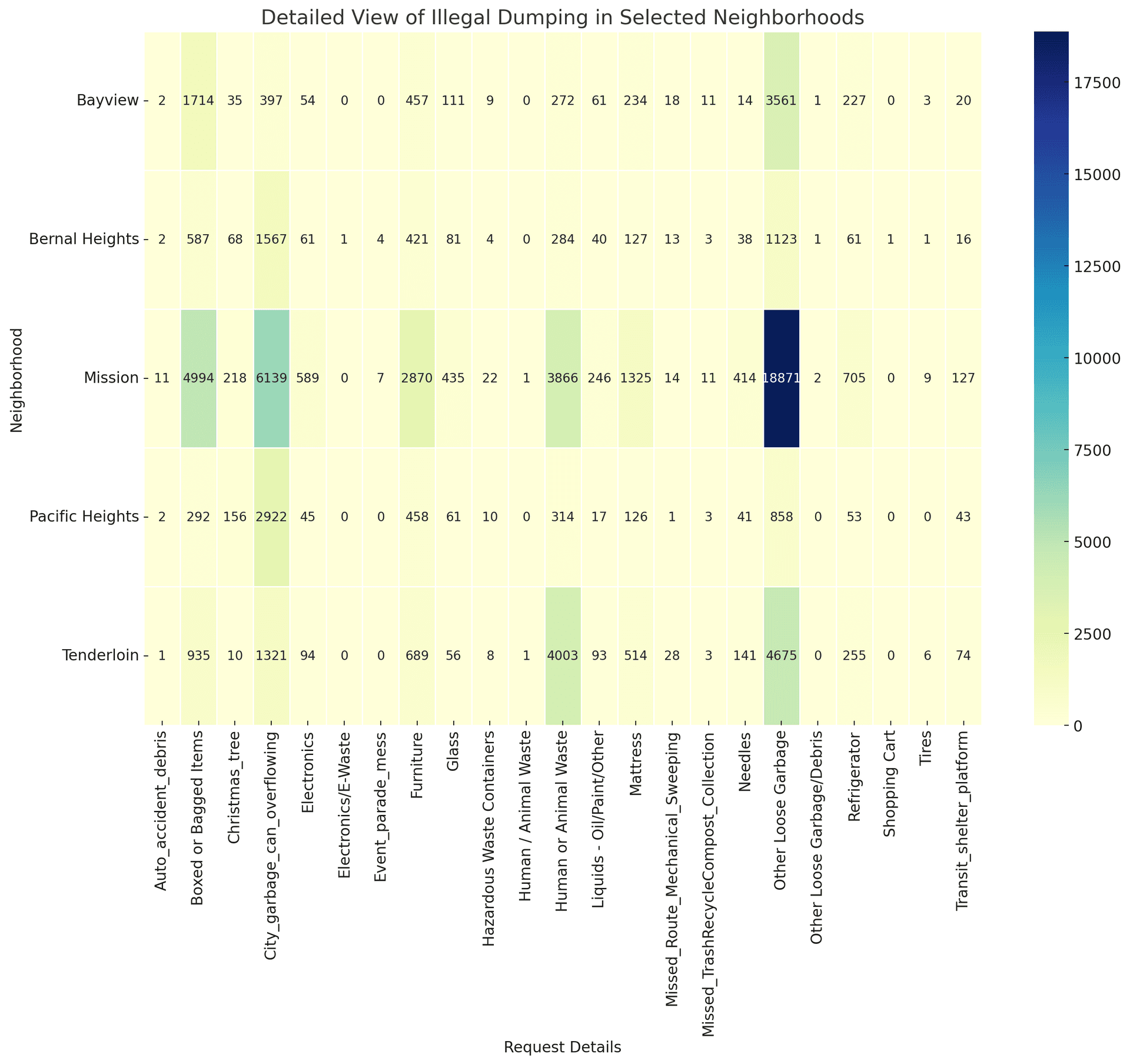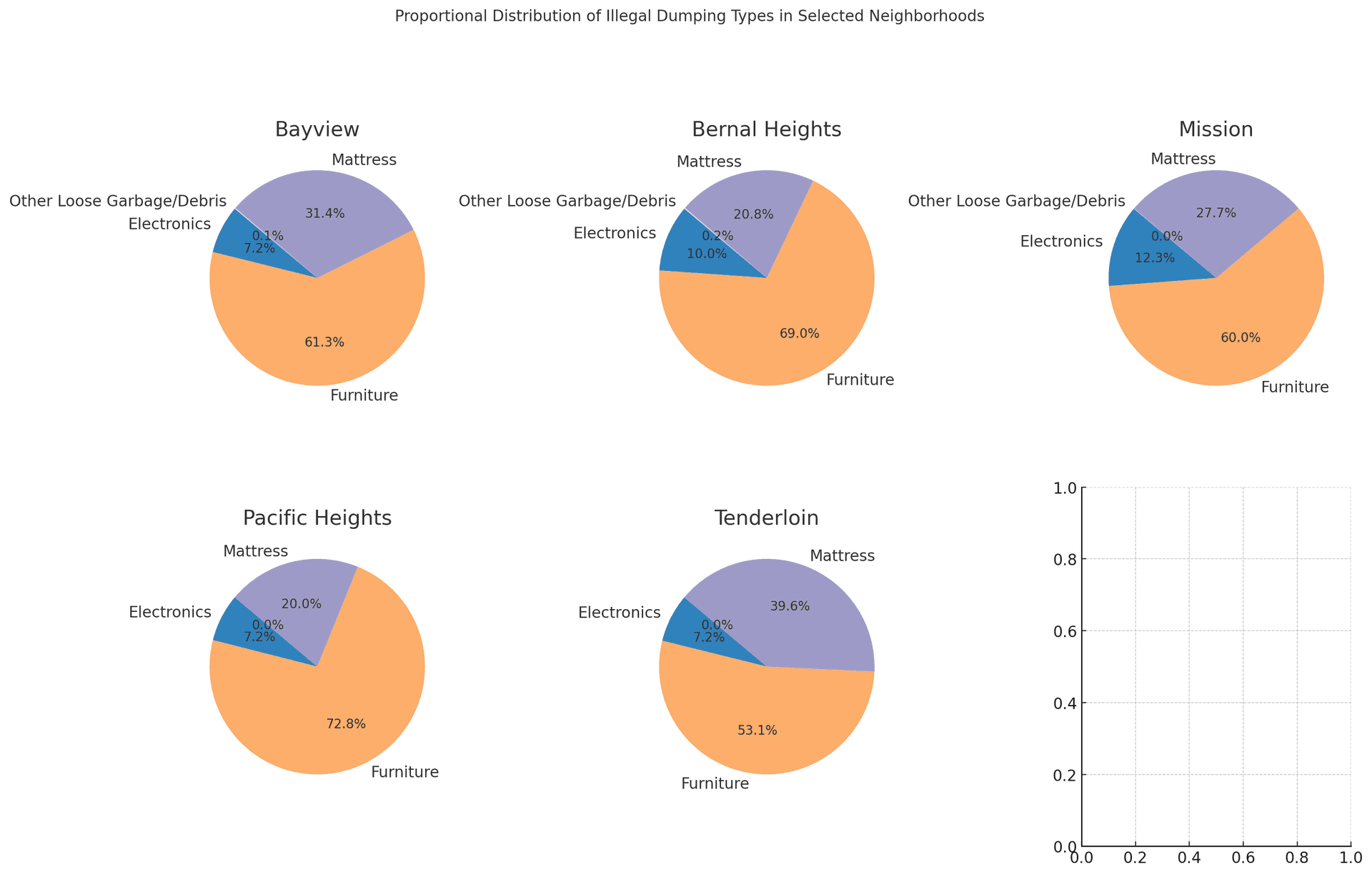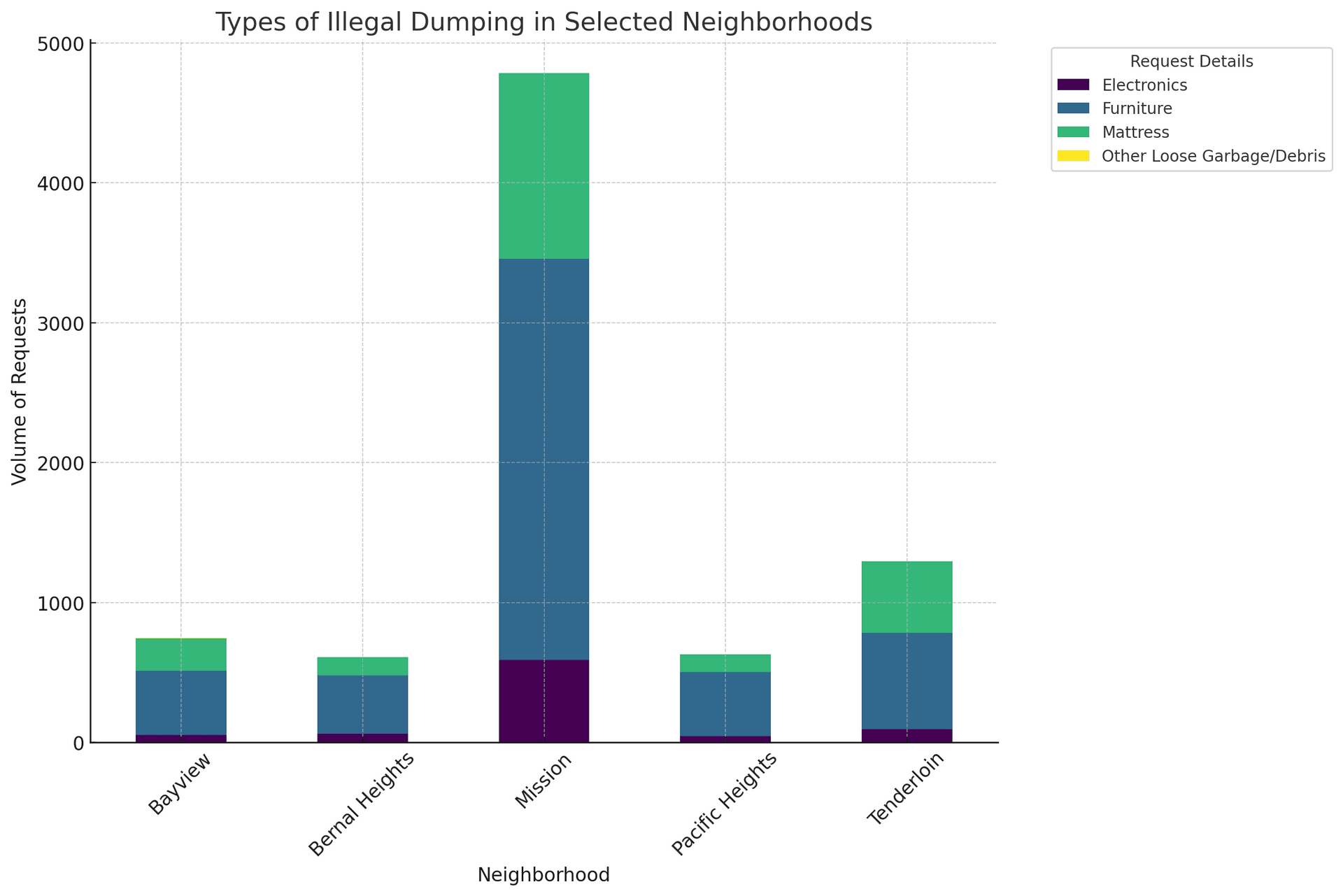Article: Diverse Dumping in San Francisco's Neighborhoods
I've been playing around with the 311 dataset in hopes of understanding what's causing my neighborhood to be so dirty. I've found some interesting trends, and I'm sharing them here. If you, like me, are curious about why Noe Valley feels different from Bayview, then stick around this will get interesting.
One thing to keep in mind when looking at these conclusions is that this data relies on resident reporting, essentially people taking time out of their day to report these issues. This kind of data has been proven in numerous studies, and is irrefutably incredibly biased in regard to economic, social, and other factors. With that being said, this data is sometimes a reflection of the kinds of waste the people who live in the neighborhood are reporting rather than the kinds of waste that are actually being dumped.

San Francisco's Battle with Illegal Dumping: A Neighborhood Perspective
In the diverse cityscape of San Francisco, illegal dumping remains a pervasive challenge, with each neighborhood grappling with its unique issues. From the industrial landscapes of Bayview to the bustling streets of the Mission, the types and volumes of dumped materials paint a picture of varied urban lifestyles and challenges.

Bayview: A Mix of Urban and Industrial Waste
In Bayview, the problem is multifaceted, reflecting its industrial roots and urban residential mix. Here, furniture and miscellaneous debris are the primary concerns, suggesting both household and commercial contributions to waste.
Bernal Heights: Electronic Waste Surges
Bernal Heights, a predominantly residential area, shows an unexpected surge in electronic waste. This trend might indicate a tech-savvy population discarding outdated gadgets, coupled with regular household dumping.
Mission: Furniture and Debris Dominate
The Mission district, known for its vibrancy and dense housing, faces a significant issue with furniture and other debris. This pattern could be attributed to the high turnover of residents and active commercial areas.
Pacific Heights: An Even Spread of Waste Types
In Pacific Heights, the spread of waste types is more even. This balanced distribution suggests a consistent pattern of household and small-scale commercial dumping, without a dominant category.
Tenderloin: Diverse Dumping in a Compact Area
The Tenderloin, with its compact urban environment, shows a diverse dumping pattern. Here, furniture takes a significant share, possibly reflecting the transient nature of its population.
Comparative Analysis: A Call for Targeted Solutions
This comparative analysis of illegal dumping across neighborhoods underscores the need for tailored waste management solutions. Each area's unique dumping profile calls for targeted strategies, be it enhanced collection services, community education, or stricter enforcement.

Conclusion: Towards a Cleaner, Sustainable City
Understanding the nuances of illegal dumping in these neighborhoods is crucial for crafting effective policies and interventions. As San Francisco moves towards a more sustainable future, addressing these localized challenges is key to fostering cleaner, healthier urban communities.